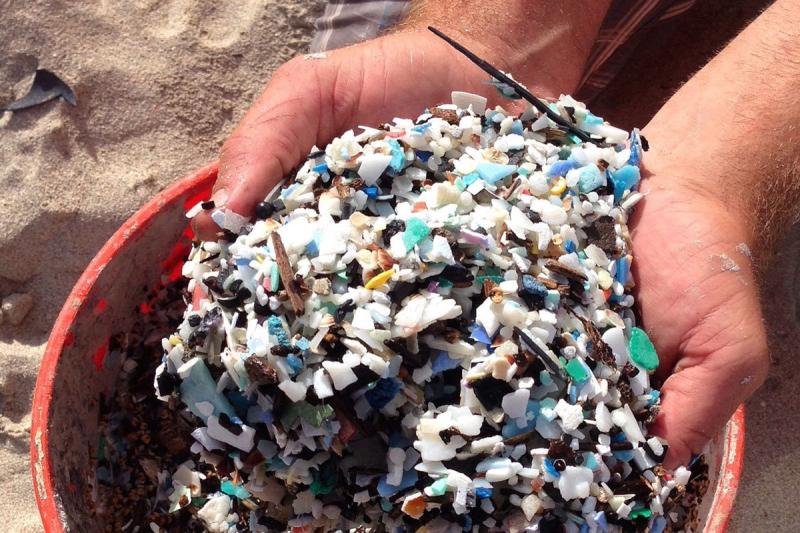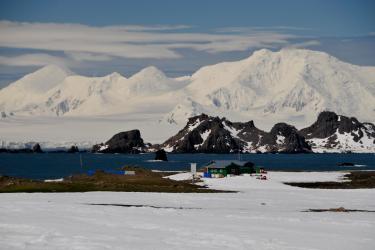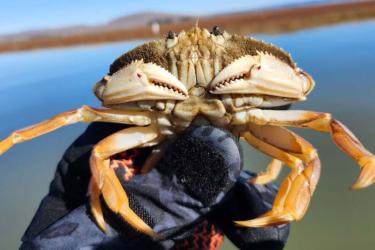How do microplastics end up in killer whale feces?
“There are two ways that the whales could ingest microplastics,” says Kim Parsons, Research Geneticist with NOAA Fisheries’ Northwest Fisheries Science Center. “They could incidentally swallow particles in sea water while eating fish, or they could ingest salmon that are themselves contaminated with microplastic particles.”
She suspects that most of the microplastics in orca poop are coming from the whales’ prey. The particles are traveling up the food chain from gut to gut, from herring to salmon to orca.
But why does it matter for orcas if their guts are full of microplastic particles and fibers?
How ingestion of microplastics affects marine mammals is both poorly understood and scientifically controversial. So the answer is, we don’t know yet, but scientists are concerned for the health of organisms at all levels of the marine food chain.
You might own a reusable water bottle advertised as being free of toxic chemical additives like bisphenol A, or BPA. Many chemicals found in microplastics are pollutants, such as polyethylene, polypropylene, phthalates, and BPA and its substitutes. Some of these chemicals are known endocrine disruptors, which means that the chemicals can disrupt an animal’s natural hormones. The chemicals may affect reproduction, growth and development, and ultimately population viability. When microplastics are moving through the whales’ digestive tract, the harmful chemicals could leach into their bodies.
Some scientists hypothesize that microplastics may also deliver harmful chemicals or even viruses as “hitchhikers.” Chemical pollutants enter the nearshore waters and ocean through stormwater run-off, wastewater effluent, and other pathways. Many pollutants, such as flame retardants, will readily bind to microplastic particles in seawater. These harmful chemicals could then “hitchhike” their way into the bodies of marine organisms.
So Parsons and her colleagues are also examining the whales’ fecal samples for xenoestrogens. That is another name for the chemicals that disrupt an animal’s hormones by mimicking natural estrogens. The researchers are looking for correlations between the types of microplastics that they find in the feces and the presence and types of estrogenic compounds.
Exposure to endocrine disruptors would be particularly concerning for the Southern Residents. The population currently has a low birth rate for calves and may be experiencing high levels of miscarriage. Just like for humans, endocrine disruptors may cause the most problems for young whales.
Parsons hopes this pilot study will lead to more research on the effects of microplastics on marine predators and their prey. She wants to look more closely at microplastics in the salmon that the killer whales eat, and in the smaller fish that salmon eat, such as herring. And, whether or not microplastics accumulate in other parts of the animals’ bodies, such as fish gills.
What can you do?
NOAA has one main message for what you can do to prevent plastics from entering the ocean: Reduce, Reuse, Recycle!
When Parsons began to realize the enormity of the volume of plastics entering our oceans, she started making changes in her own life. “When I began learning about microparticles and microfibers, I even started avoiding polar fleece clothing, which is pretty hard as a Seattlite,” she says.
You can try her changes too:
- Use reusable containers for food and packing lunches
- Carryreusable grocery bags
- Avoid straws at restaurants
- Minimize your consumer demand for plastics
- Dispose of waste properly no matter where you are
- Participate in local litter cleanups in your area
Remember that our land and sea are connected. All of us can make a difference.







